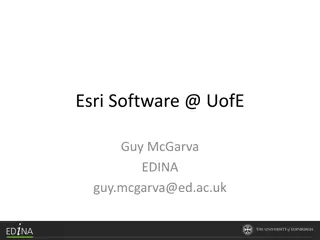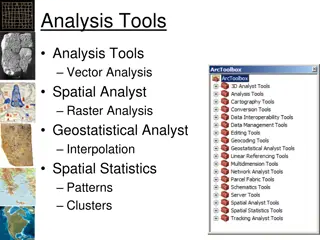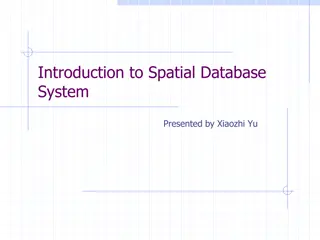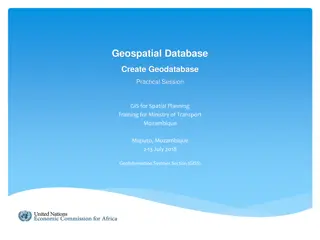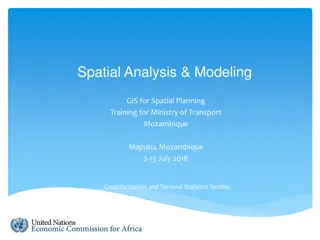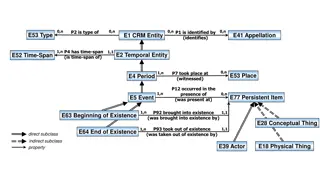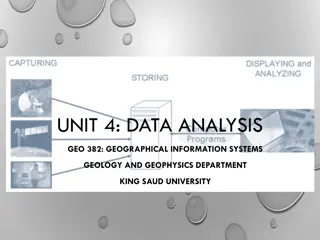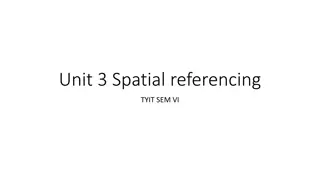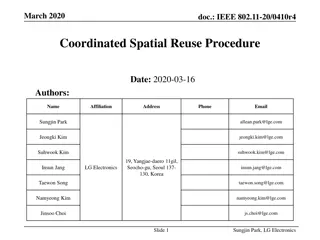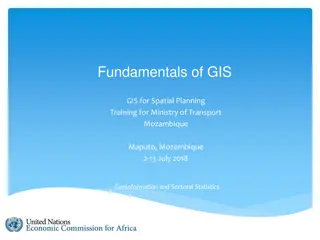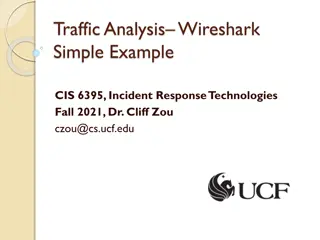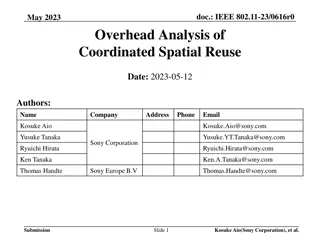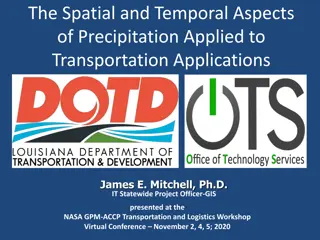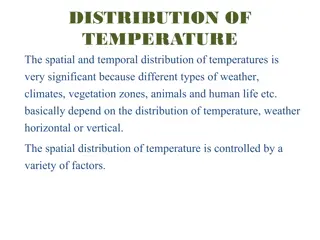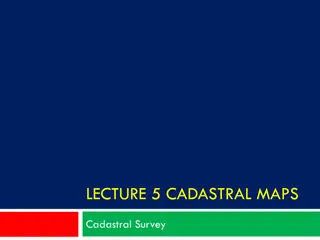Understanding ArcGIS Network Analyst for Spatial Analysis
ArcGIS Network Analyst offers tools for complex routing problems using a unique network model. Learn about networks, elements, attributes, evaluators, and more to enhance spatial analysis capabilities with ArcGIS.
Download Presentation

Please find below an Image/Link to download the presentation.
The content on the website is provided AS IS for your information and personal use only. It may not be sold, licensed, or shared on other websites without obtaining consent from the author. Download presentation by click this link. If you encounter any issues during the download, it is possible that the publisher has removed the file from their server.
E N D
Presentation Transcript
Getting to Getting to know ArcGIS know ArcGIS Network Network Analyst Analyst bit.ly/clemsongis
Overview ArcGIS Network Analyst What is a network? Network Elements Network Attributes Network Evaluators How to create a Network Dataset? How to calculate travel time from fire stations to census tracts using OD cost matrix analysis? You are a GIS analyst at fire department and they are cutting the budget and want to shut 4 fire stations, how to find which one are those using Location Allocation?
ARCGIS NETWORK ANALYST ArcGIS Network Analyst provides network-based spatial analysis tools for solving complex routing problems. It uses a configurable transportation network data model, allowing you to accurately represent their unique network requirements. You can plan routes for an entire fleet, calculate drive-times, locate facilities and solve other network related problems.
What is a network? A network is a system composed of interconnected parts or elements. These elements are combined to represent possible routes from one location to another. Like roads, networks are used for the transportation of people, resources, and goods.
Network Elements There are three main types of network elements: Edges Connect to other elements using junctions and are the links over which agents travel. Junctions Connect edges and facilitate navigation from one edge to another. Junctions come from vertices or point features to represent street intersections in a road network. Turns Store information that can affect movement between two or more edges.
Network Attributes There are four kinds types of network attributes: Cost Cost attributes work as impedances, which penalize traversal over an element in the network. Network datasets must have at least one cost attribute. Descriptor Descriptors contain general information to calculate the values for other three attributes. For example: Number of lanes, speed limit Restriction Restrictions prohibit traversing certain edges (roads) in certain directions. For example, One-way Street, closures etc. Hierarchy Hierarchy differentiates among road types to help network analysis, and it allows a network dataset to assign priority. For example: Highway, Primary road etc. Attributes describe elements!
Network Evaluators An evaluator is used to calculate a value for each attribute to determine total costs. There is an evaluator for attributes of each of the network elements (edges, junctions, and turns) and each of their source feature classes. Evaluators determine attribute values!
Exercise 1: Creating a network dataset
Exercise 2: Calculating travel time from each fire station to census tracts using OD Cost Matrix analysis
Exercise 3: Which out of 14 fire stations should your department shut by still covering all the census tracts?
Contacts Patricia Carbajales-Dale pcarbaj@clemson.edu Palak Matta pmatta@clemson.edu clemsongis.org Thank you!


